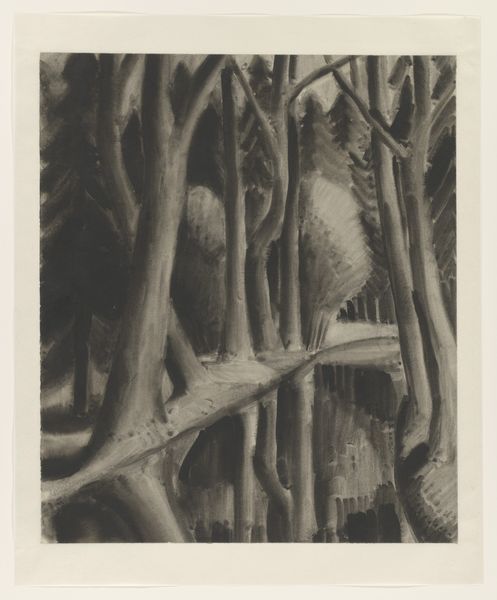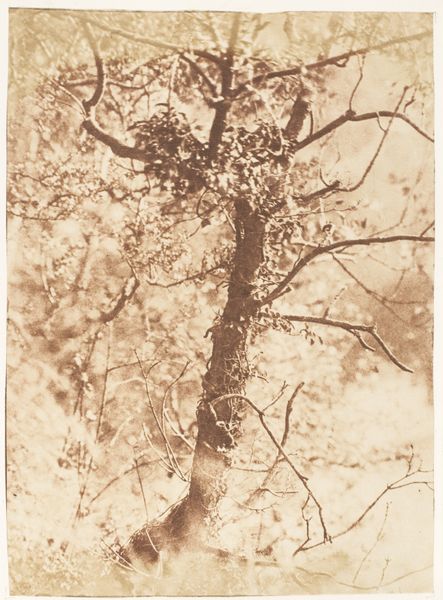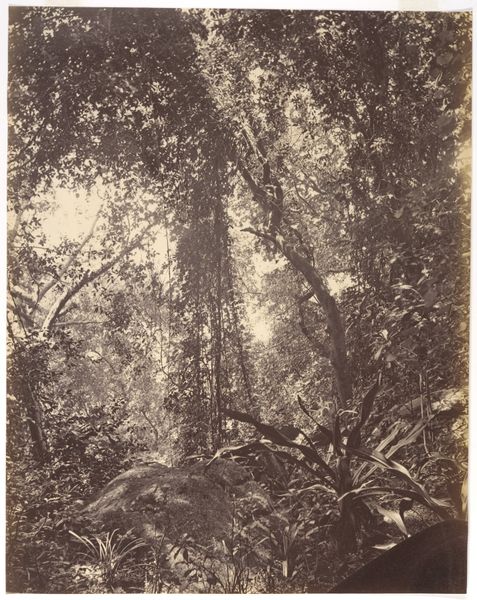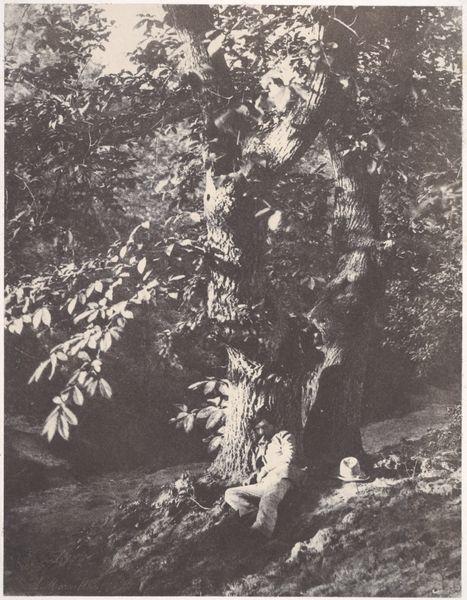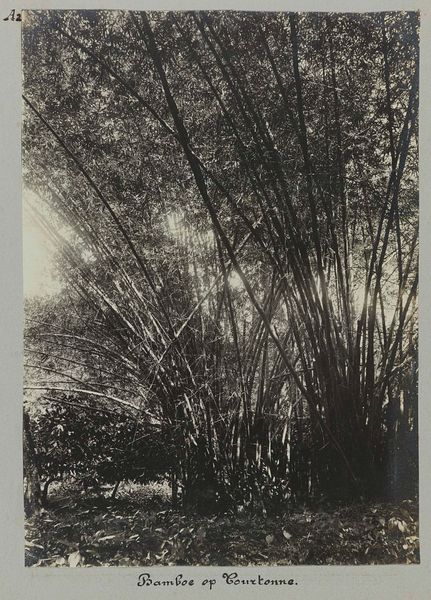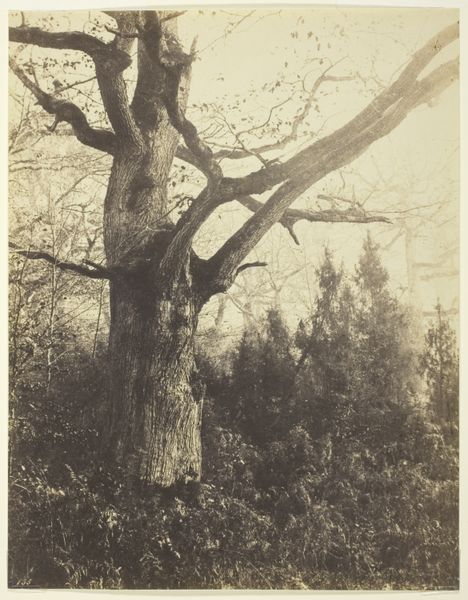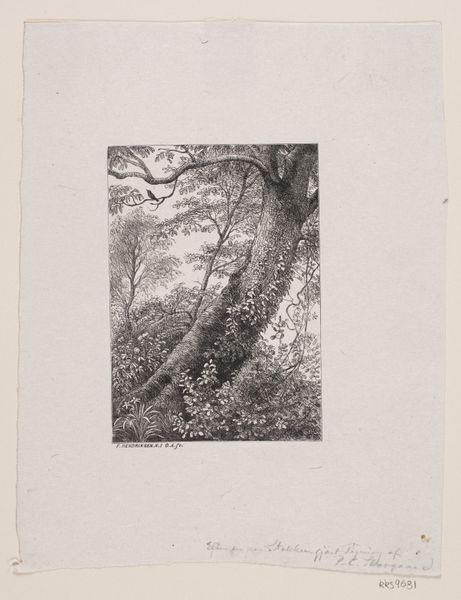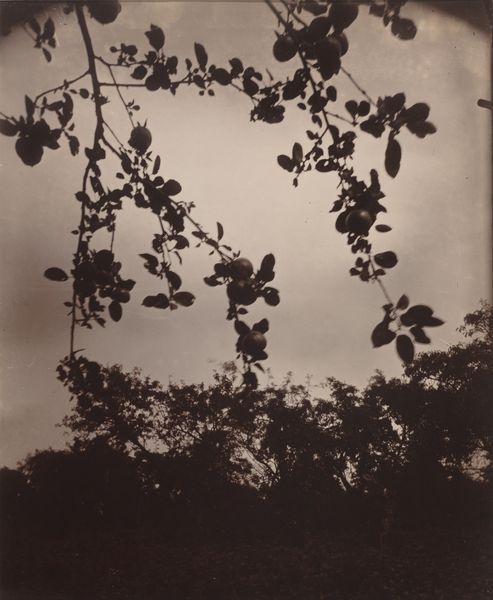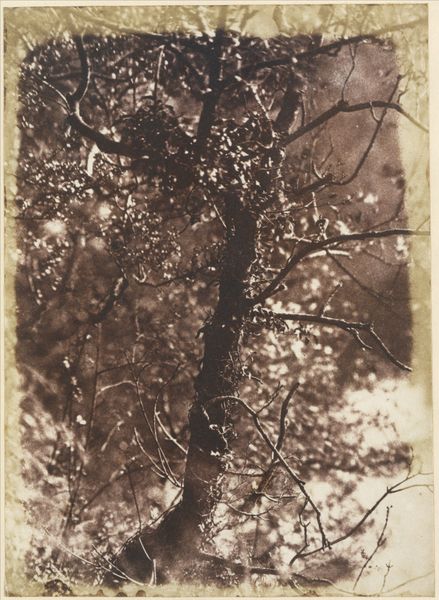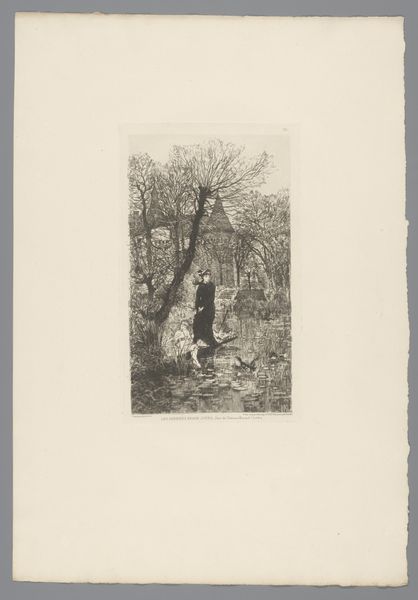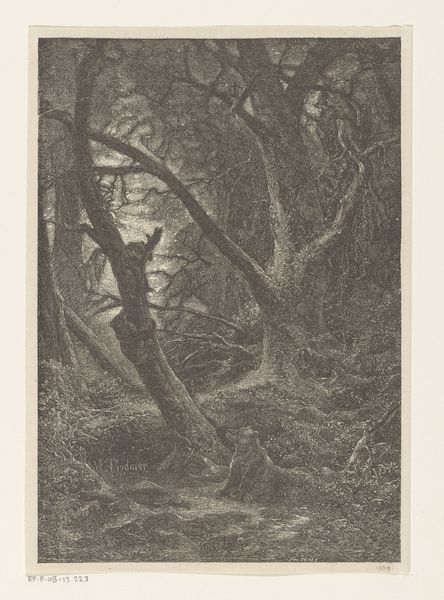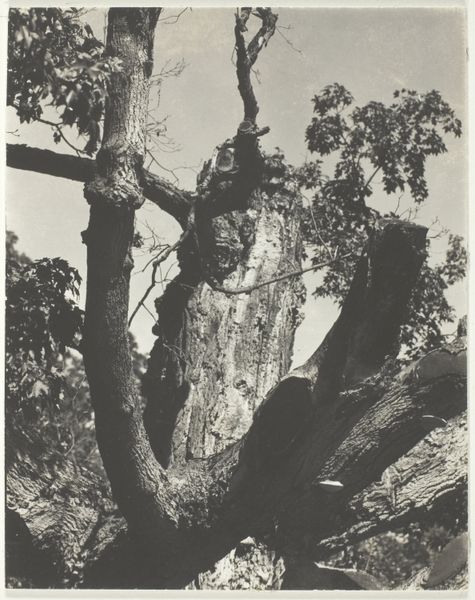
print, photography
#
organic
#
pictorialism
# print
#
organic shape
#
landscape
#
nature
#
photography
#
united-states
#
modernism
Dimensions: 24.3 × 19.5 cm (image) 25.1 × 20.1 cm (paper)
Copyright: Public Domain
Editor: Here we have "The Dancing Trees," a 1922 print by Alfred Stieglitz, currently residing at the Art Institute of Chicago. It’s a photographic image with strikingly high contrast; I find the close-up view almost abstract, disrupting my sense of depth. How do you approach its interpretation? Curator: Note the almost tactile quality achieved through Stieglitz's control of light and shadow. Consider how the sharply defined tree trunks and the softer focus of the background grass create visual tension. This play with focus and the meticulous arrangement of lines, how would you say these forms guide our eye? Editor: I guess they direct my eye in a series of diagonals—from the lower left to the upper right. Is that considered a dynamic composition? Curator: Precisely. Dynamic not just in composition but in the textures evoked, isn't it? The smoothness of the bark, contrasted with the hazy background… Stieglitz has captured a visual experience and elevated it to the realm of formal exploration, highlighting the medium's potential. Editor: It's fascinating how he uses photography to play with form, almost challenging its representational role. I was thinking, do you see any ties to Pictorialism beyond just subject and medium? Curator: Yes, certainly! Look at the tonality and the manipulation of the print to create a softened, almost painterly effect. Stieglitz is using photographic techniques to evoke the aesthetics of painting. Observe how he coaxes the image towards an idea instead of only capturing what's there. Editor: I never considered how the blurring could serve an aesthetic purpose in itself! Thanks. I'm looking at this photography in a totally different way now! Curator: Indeed. And that exploration of visuality remains as stimulating today.
Comments
No comments
Be the first to comment and join the conversation on the ultimate creative platform.
